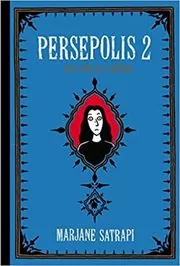The Devil in the White City Summary
Author: Erik Larson
This page offers our The Devil in the White City summary (Erik Larson's book). It opens with an overview of the book, and follows with a concise chapter-by-chapter summary.
Drafted with AI assistance and reviewed by a human editor.
As an Amazon Associate, we earn from qualifying purchases (at no extra cost to you).
This book has 1 recommender!
Overview
In 1912, Daniel H. Burnham, an accomplished architect and the mind behind the World's Columbian Exposition of 1893, finds himself aboard the Olympic, immobilized due to his deteriorating health. He is reminded of his dear friend, Frank Millet, a distinguished painter for the Chicago World Fair of 1893, who is also on a voyage, but aboard the ill-fated Titanic. Despite his attempts to contact Millet, Burnham is informed of a disastrous accident involving his friend's ship, though he remains hopeful, as the Olympic is en route to the rescue.
Rewinding to 1890, Chicago is in the throes of rapid development. H.H. Holmes, a young doctor, arrives in the city and feels at home amidst the disorder, and the opportunities it presents for heinous deeds to go unnoticed. When Chicago is chosen to host the World's Columbian Exposition of 1893, the city sees it as an opportunity to enhance its reputation. Burnham and his associate, John Root, are selected to design the Fair due to their architectural prowess within the city. Holmes, meanwhile, manipulates a local named Mrs. Holton into selling him her drugstore, only for her to vanish without a trace.
Upon gaining control of the Fair's architectural design, Burnham and Root face numerous challenges including internal disputes, time constraints, and economic downturn. Despite these odds, and the untimely death of his partner, Burnham perseveres. Concurrently, Holmes marries Myrta Belknap and plans to construct a hotel with suspicious features, including vaults, gas jets, and a hidden basement, in anticipation of the Fair's visitors. Back at the Fair, despite numerous setbacks, it opens on time, with some parts still under construction. Holmes' hotel begins to host guests, who mysteriously start disappearing. Meanwhile, Burnham is implicated in a tragic fire at the Fair due to a construction flaw but is subsequently released. Despite financial challenges, the Fair manages to break even on Chicago Day due to record attendance.
In the wake of the Fair, Holmes flees Chicago due to massive debts and plots to build a new fortress in Texas on the inherited land from his new wife, Minnie Williams. However, in the search for missing children of an associate, Detective Geyer uncovers Holmes' horrifying deeds, leading to his conviction and execution. The narrative comes full circle with Burnham aboard the Olympic, where he learns about Millet's tragic end on the Titanic, preceding his own demise by a mere two months.
Edited by
Software engineer whose passion for tracking book recommendations from podcasts inspired the creation of MRB.
Lead investor at 3one4 Capital whose startup expertise and love for books helped shaped MRB and its growth.







Comments
Did we miss something? Have feedback?
Help us improve this page by sharing your thoughts